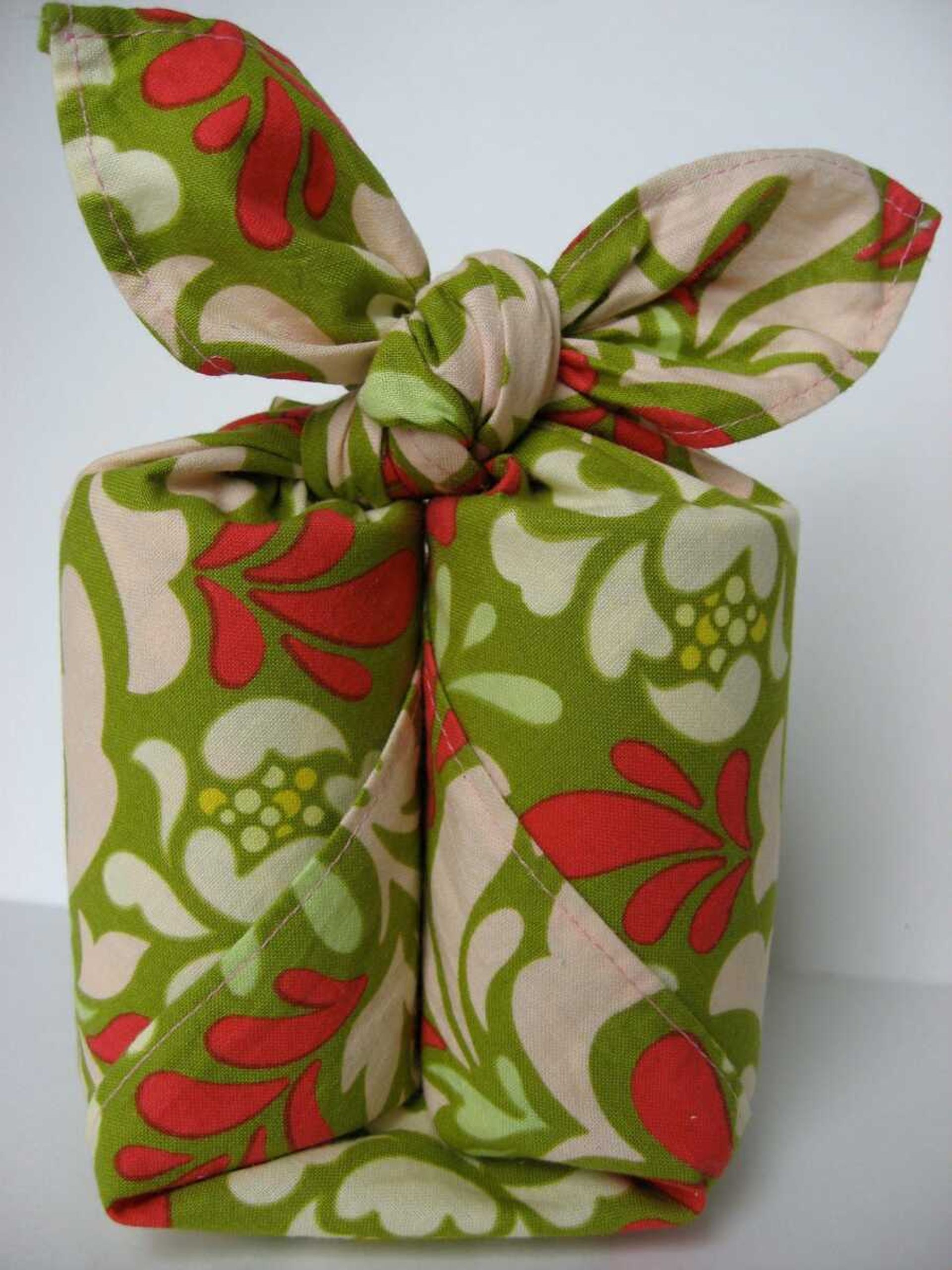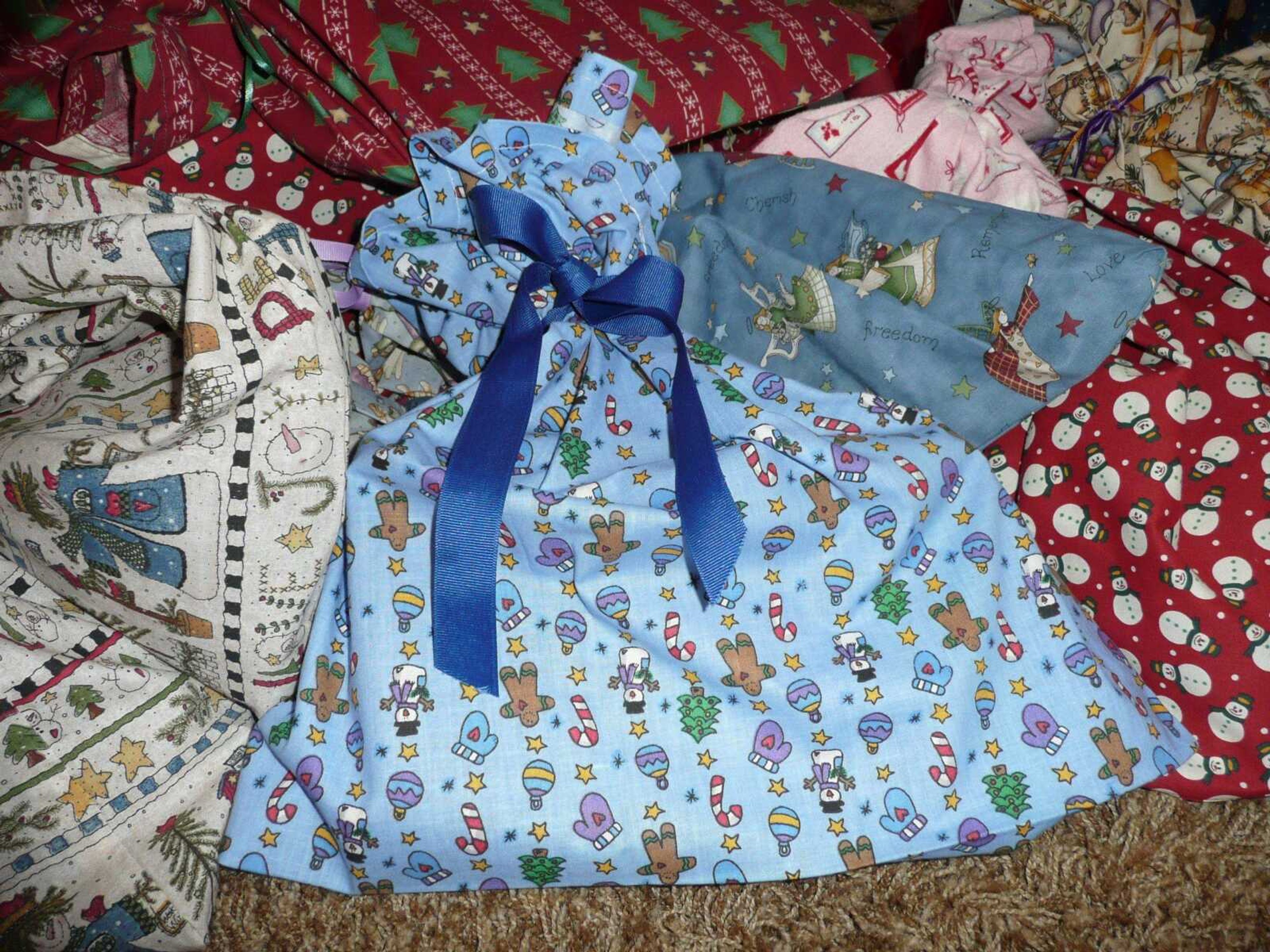Handmade gift bags mean more
Put down the tape dispenser and the wrapping paper. Instead, make your own gift bags this holiday season. They can be done in a snap, and in their homemade splendor, they become part of the gift. There's a gift bag for every sewing level; if you have sharp scissors and holiday-themed fabric, you're basically ready to go...
Put down the tape dispenser and the wrapping paper.
Instead, make your own gift bags this holiday season. They can be done in a snap, and in their homemade splendor, they become part of the gift.
There's a gift bag for every sewing level; if you have sharp scissors and holiday-themed fabric, you're basically ready to go.
Non-sewers can turn to "furoshiki," a Japanese term for a simple square of fabric into which nearly anything can be tied. Crafters who can sew a straight line may want to try a cinched gift bag, while more advanced sewers can tackle something like the "eco-wrap pouch" created by craft blogger Jessica Okui.
The cinched gift bag is a favorite of Shawn Whyte, of Helena, Mont., who got tired of the mess generated by paper gift bags and wrapping. She began folding fabric in half and sewing it up the sides, often with a drawstring or ribbon sewn inside. She's been whipping out these uber-simple, colorfully patterned fabric bags for seven years, and throws nearly every gift into them.

Whyte learned a valuable lesson along the way.
"Initially, I put a lot of effort into the bag, as it was part of the gift. I would hem the edges, and do everything to make it look great," she says. "Then I cut myself some slack and figured out a way to whip them together -- super simple, no fancy sewing. And guess what? People loved them just as much as the ones that took a lot of time."
Okui, of the San Francisco Bay area, also created her fabric gift wraps to reduce the piles of crumpled gift paper on Christmas mornings. Her "Eco Christmas Gift Wrap" is a lined pouch perfect for smaller, more delicate gifts, or anything that needs special presentation.
"It's really not that difficult to make," said Okui. "I don't consider myself an advanced seamstress."
Instructions are available on her crafting blog site, Zakka Life (under the craft projects' "Christmas" category).
Okui also enjoys making the furoshiki, traditionally used in Japan to wrap anything from books to melons, throughout the year. "It's something different," said Okui. "Anything that's different is going to appeal to someone."
Wrapping something in a furoshiki isn't always simple; there are more than a dozen ways to wrap objects, depending on whether you're wrapping a box or something more unusual, say, a fishing pole.
The government of Japan offers downloadable instructions for how to wrap a furoshiki 14 ways, at this PDF: http://www.env.go.jp/en/focus/attach/060403-5.html. Or search YouTube.com for video instructions.
Cindy Hopper, a craft blogger in Topeka, Kan., is an ardent furoshiki fan.
"I am totally taken with this method for wrapping gifts," Hopper said on her crafting blog, Skip To My Lou. "It is not only beautiful but also eco-friendly."
Hopper recommends the book "Wrapagami" (St. Martin's Griffin, 2009) for its beautifully photographed examples of furoshiki wrapping.
Lightweight fabrics, such as silk, work best for furoshikis, but Hopper says anything can be used, even burlap. Or go simpler and use a bandanna, large dinner napkin, scarf or scraps of old clothing.
She recommends starting with a 20-by-20-inch fabric square (the standard size is larger, 28-by-28 inches). Hem it -- or don't. Fabric can be cut with pinking shears to limit unraveling.
On the Web:
Connect with the Southeast Missourian Newsroom:
For corrections to this story or other insights for the editor, click here. To submit a letter to the editor, click here. To learn about the Southeast Missourian’s AI Policy, click here.










